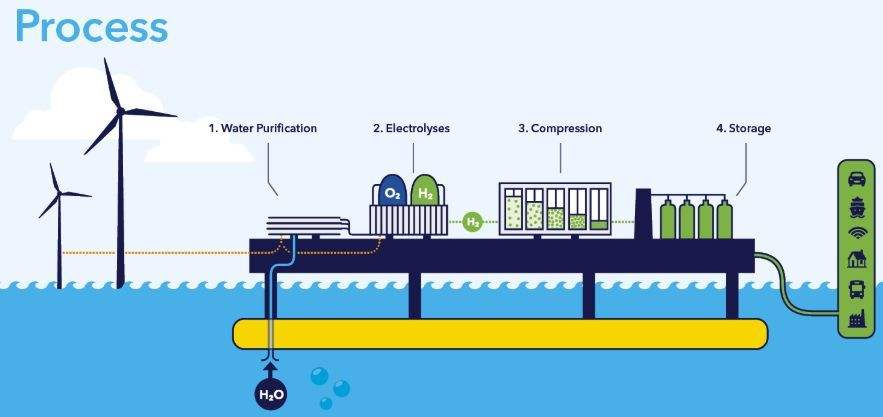Although the national wind power red warning will be fully lifted in 2020, the phenomenon of wind abandonment still exists not only in the “Three Norths”, and other individual regions are not optimistic. According to the latest data recently, the wind abandonment rate in Hunan Province is as high as 35%. Previously, its 14 cities/counties have been listed as wind power red warning areas, and 7 places in Hubei have been listed as red warning areas.
With the rise of new technologies such as hydrogen production, industry insiders have begun to study the economics and feasibility of abandoning wind to produce hydrogen. As a kind of clean energy, hydrogen has attracted more and more attention in recent years due to its clean, high-efficiency and zero-emission characteristics and its wide application in various industries. However, traditional hydrogen production methods are mainly obtained through the reformation of fossil resources and emit a large amount of carbon dioxide, which cannot truly achieve clean utilization.
If we use abandoned wind to produce hydrogen, the electricity will not be wasted. Hydrogen production by "abandoning wind" will not only help solve the problem of wind power consumption, break through the restrictions on power transmission, but also bring a "hydrogen energy economy" to restricted areas. At the same time, it can also regulate and suppress large-scale fluctuations in grid voltage when large-scale wind power is integrated into the grid. Hydrogen production from wind power has become one of the current hot topics.
Hydrogen production by wind power means that electricity generated by wind is directly converted into hydrogen by water electrolysis hydrogen production equipment. The hydrogen produced by electrolysis of water is convenient for long-term storage. The specific process is: wind power generation-water electrolysis-hydrogen production and oxygen production-hydrogen energy-applied to a variety of industries, such as transportation, industrial thermal processing, and chemical industries.

At present, there are two technical routes for wind power electrolysis of hydrogen production: independent wind power supply will be affected by wind power fluctuations, but not controlled by grid prices; wind and grid intelligent coordinated power supply methods are not affected by wind power fluctuations, and hydrogen production is more efficient. But electricity prices are affected by the grid.
As a clean, efficient and storable secondary energy, hydrogen energy will occupy an important position in the 21st century energy system. At present, many developed countries in the world have incorporated the development of the hydrogen energy industry into their national development strategies. my country included it in the "Energy Technology Revolution and Innovation Action Plan" and other major plans, and included it in the State Council's "Government Work Report."
In the first half of 2020, 15 hydrogen energy policy documents have been issued at the national level. Up to now, more than 40 local governments in my country have launched plans to support the development of the hydrogen energy industry, which can be described as a new generation of "net celebrities" in the energy sector.
















 RCCN WeChat QrCode
RCCN WeChat QrCode Mobile WebSite
Mobile WebSite